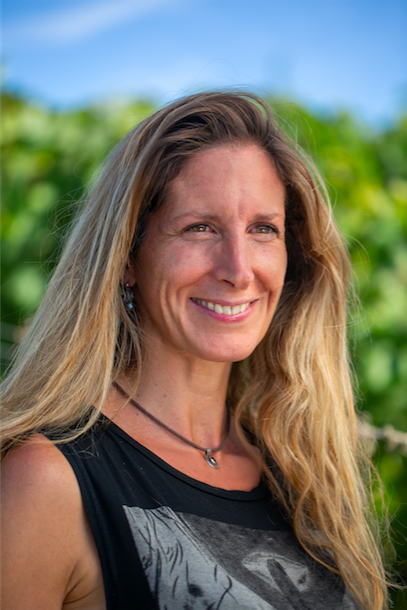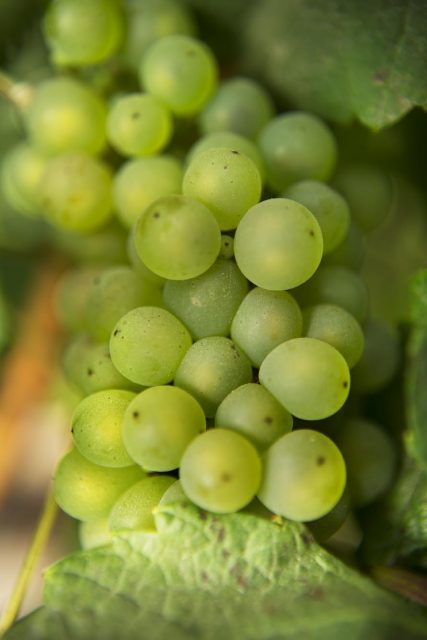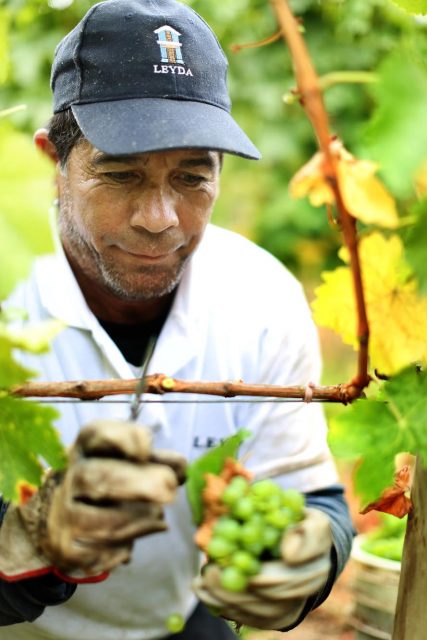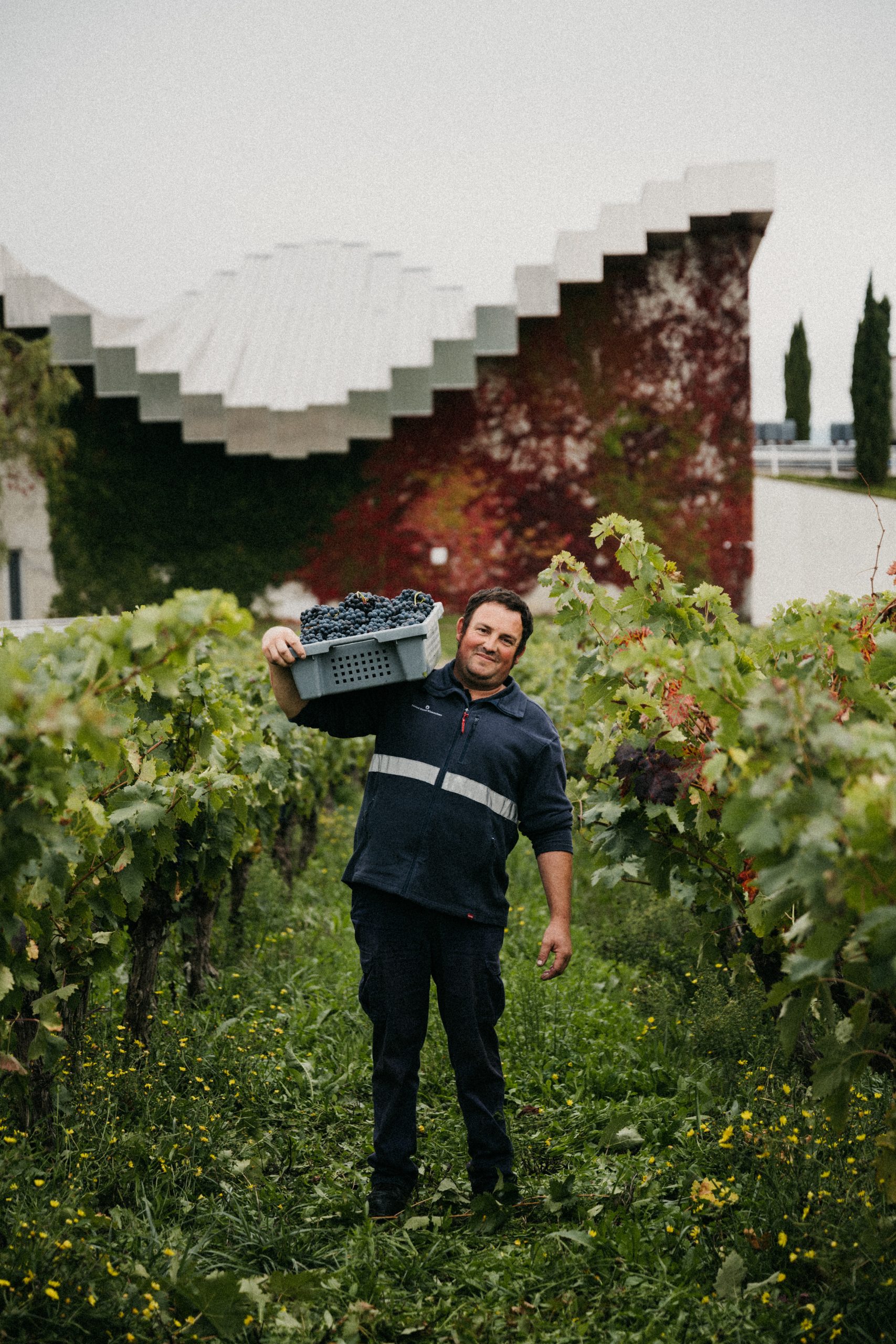db meets: Viviana Navarrete
The chief winemaker of Viña Leyda on why Sauvignon Blanc is the star of the 2021 vintage, her new small parcel Pinot Noir, and experimenting with cool climate varieties.

How was the 2021 vintage for you – was it a challenge harvesting grapes during a pandemic?
The 2021 season presented significant challenges for us. The season began with cool, cloudy and damp spring, conditions that favoured aromatic varieties and high-quality grapes. Budburst got underway more slowly, some 7-10 days later than usual. The season started with good moisture levels in the soils thanks to the 280mm of rain that fell in winter and spring, a figure that is higher than the historical average in the Leyda Valley.
In late January, 52mm of rain fell, affecting those plots with early-cycle varieties and clones that had already reached veraison. However, other plots with later-cycle clones, such as Sauvignon Blanc, Riesling, Sauvignon Gris, were still at a very early phenological stage, prior to veraison, so the rain did not impact them and the grapes were of excellent quality.
As for pandemic challenges, this was our second harvest, so we already had some experience from last year. We had less people working in the cellar and in the vineyard as well, trying to be as efficient as we could. It was of great help having a cold season, so we weren’t in a rush for harvesting the grapes that quickly so the tasks at the cellar could be done properly.
Which grape varieties stood out as particularly good to you?
Sauvignon Blanc was the grape that stood out. The cold season was great for these aromatic grape varieties, allowing the berries to ripe in a very slow rate (about 15-17 days delayed versus normal harvest dates), enhancing intense aromas and flavours. Because of the challenging cool weather, clusters were smaller in weight, with small berries giving birth to concentrated and vibrant wines.
The quality of our Sauvignon Blanc excelled through, with great intensity, typical cool-climate herbaceous character together with citrus aromas and fresh, bright palates. Wines are showing low alcohol level, low pH and high natural acidity with great cold climate character.
When it comes to Sauvignon Blanc, Chile has stiff competition from New Zealand – what can Chilean Sauvignon Blanc offer consumers that NZ Sauvignon can’t?
Our country has the power of diversity expressed in different terroirs that cross all over the Chilean map starting from the most arid desert in the world to the South in Patagonia. We have great exponents for Sauvignon Blanc, as we have diverse coastal valleys along the country’s coast starting from Limari, Aconcagua Costa, Casablanca, San Antonio, Leyda, Paredones, and even southern as Osorno resulting in a greater stylistic diversity.
Chilean Sauvignon Blanc from these areas are crafted with good and different clonal selection, drip irrigation, planted in high density plantation, showing the cold influence of the Pacific Ocean cooled down by the Antartica’s Humboldt current. Therefore you can find in our country very expressive and aromatic perfumed Sauvignon, mostly linked to citrus fruit and minerality.

In those valleys with even cooler climates like our Leyda Valley you will find more Sauvignon with herbaceous and salty character. Depending on the soils you can go from creamy rounder palates to more refined, but in absolutely all of these Sauvignon you will get beautiful crisp acidity and fresh vibrant palates.
In terms of quality we are recognised for having outstanding results, through one variety and multiple glasses, something that is absolutely unique to Chile as we’ve had consistent harvest seasons thought-out the years due to our Mediterranean climate.
With New Zealand suffering a Sauvignon Blanc shortage this year, do you think Chilean winemakers are set to gain from this and the popularity of Chilean Sauvignon Blanc will rise as a result?
The Sauvignon Blanc from Chile’s cool climate regions is one of the varieties that has grown strongly in awareness during the past years and which has been getting attention globally. I think this is a very good year for Chilean Sauvignon to rise and shine; in fact it is the number one variety in the UK, which gives us a great opportunity to be recognised in the category.
Our country has great climate and soil conditions in our different cool valleys for crafting beautiful Sauvignon. We excel in quality and offer different ranges for this variety; we just need the opportunity to show to the consumers what we have to offer, so they can see Chile as a great producer for whites. I’m sure they will be surprised of the quality and the pure honest expression of our Sauvignon from Viña Leyda.
Partner Content
Have you tweaked your Pinot Noir grape growing / winemaking techniques recently, and if so, how?
Since some years back we have been working strongly in separating blocks in small units, thanks to a deep soil research, focusing in the different soil composition. This finetuning enables us to obtain a more focus palate: we look for sinewy, tension and vibrant palates in all of the five Pinot Noirs that we craft.
In terms of winemaking techniques, we are working with whole clusters up to 30-35%, natural yeast for the small plots, decreasing the amount of barrel use in favour of concrete and casks without toasting. All of these techniques get us closer to our goal of enhancing the bright fruit expression and minerality that Leyda Valley delivers.

Do you have any new wines in the pipeline at the moment?
This year we are bottling a new high-end Pinot Noir that seeks to achieve the best expression of this variety from Leyda Valley. This is a wine with very limited quantity as we are producing only 1,000 bottles. This wine comes from a selected clone 777 and limestone soil. I’m fascinated for its character and pure expression, with raspberries, basil and a textured palate.
In what ways are you working towards being a more sustainable and lower carbon footprint winery?
We are constantly searching for alternatives that enable us to evolve our energy matrix, in order to decarbonise the industry and reach our winery’s goal of being climate positive by 2050.
Furthermore, we are incorporating ecodesign into our entire portfolio and so we will soon have lighter bottles, reducing our carbon footprint and we will produce our wines using 100% renewable electrical energy by the end of this 2021.
Are you adapting your viticultural practices due to the ongoing threat of global warming?
We have been looking for ways to achieve sustainable progress and manage our vineyards in the most sustainable way, with an understanding that our soils are alive.
This is through various certifications such as the National Sustainability Code of Wines of Chile as we were recertified for the tenth year demonstrating our commitment to sustainability and FOR LIFE, which ensures that environmental responsibilities promoting an increasingly sustainable operation, whereby Viña Leyda is managed under these standards, promoting reduced agrochemical use.
At the same time we are adapting some practices on responsible water use for drip irrigation measuring and using only the volume that the vine requires. For this we use weather stations, sensors and Scholander pressure bomb among others.
As the soils are very important for us we subsoil the soils bringing air into the profile not only improving microbiota but also helping to be more efficient in the use of rainfall retaining better the humidity. We use cover crops for retaining humidity which also helps to structure the soil.
We manage our canopies looking for balance, avoiding long shoots because having more leaves makes your vine need more water. We are convinced that we will continue learning and improving in the future, in order to transform our agricultural production into one of the most innovative and sustainable in the global wine industry.
What innovations are you working on in the vineyard and winery at the moment?
In terms of innovation in the winery, we are working on developing a high end Sauvignon Blanc, with focus mainly in its texture and structure, using different vessels and materials going out of the stainless steel. And in the vineyard we are planning to explore with new cool climate grape varieties in the valley, but we are in an early stage of the project.




